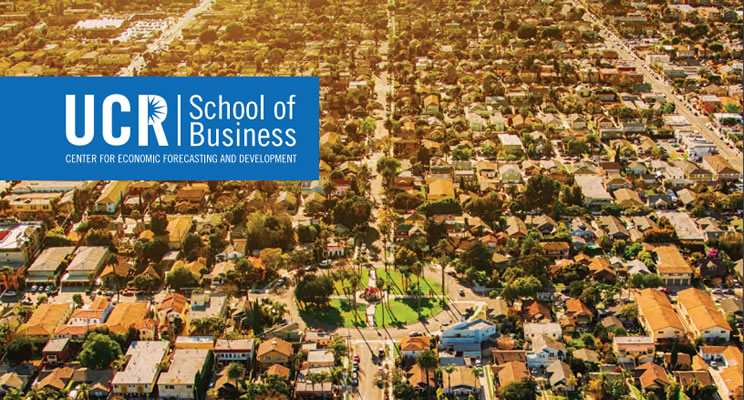Trade Disputes Not Having Notable Effect, To Date
Riverside, Ca. – The 2018, 4th Quarter Inland Empire Business Activity Index shows the region’s economy continuing to advance despite ongoing trade disputes that many feared would act as a drag on the area’s sizable logistics industry. According to the new Index, business activity in the Inland Empire increased at an annualized rate of 2.2% in the 4th quarter of 2018, the latest numbers available.
The region’s growth has fallen behind the nation’s, however, which is a change from the last edition of the Index, released quarterly by the UCR School of Business Center for Economic Forecasting and Development. At an annualized growth rate of 2.6%, U.S. GDP edged out growth in the Inland Empire in the 4th quarter of 2018 – and in year-over year terms, the nation pulled ahead even more significantly—3.1% growth for U.S. GDP vs. 2.4% for IE Business Activity from the 4th quarter of 2017 to the 4th quarter of 2018.
This shift has not dampened the regional outlook, however, which has the Inland Empire economy continuing to grow at a steady pace in 2019 against the backdrop of a somewhat slowing U.S. economy. Data used to compile the Index also indicate that logistics/warehousing/transportation, one of the region’s leading industries in recent years, has not suffered notable negative effects from ongoing conflicts with major U.S. trading partners. Employment data show solid job growth in the local logistics sector throughout the past year and commercial real estate data reflect an increase in demand for logistics related space.
“The outlook for the Inland Empire economy in 2019 is good,” said Robert Kleinhenz, Executive Director of Research at the Center for Economic Forecasting and one of the Index authors. “We expect continued job growth in most sectors and expect the unemployment rate to hold steady near its record low. Like the state as a whole, the region’s pressing challenge at this time is to increase its housing inventory to ensure there is an adequate supply of homes for the workers who are needed to support growth in the Inland Empire’s industries in the years ahead.”
Overall, commercial real estate, and to a lesser extent residential real estate, reflect continued growth in the Inland Empires’ business activity and support the relatively positive outlook. Rent for all commercial property types in the region increased in 2018 and vacancy rates dropped for most, indicating strong demand. This likely helped drive the continued surge in building permits for non-residential property types that occurred throughout last year.
On the residential side, building permit activity dropped only slightly in the Inland Empire in 2018, with the split between single-family and multi-family units roughly matching 2017 levels. Notably, the building that has occurred in the region, and has added to the available housing stock, has not been enough to offset price growth in the market. The median price for an existing single-family home jumped 6.9% in 2018 despite a slowdown in sales that is the likely result of a lack of inventory.
The new Inland Empire Business Activity Index examines employment, consumer and business spending, and residential and commercial real estate. Please view the complete analysis here.


